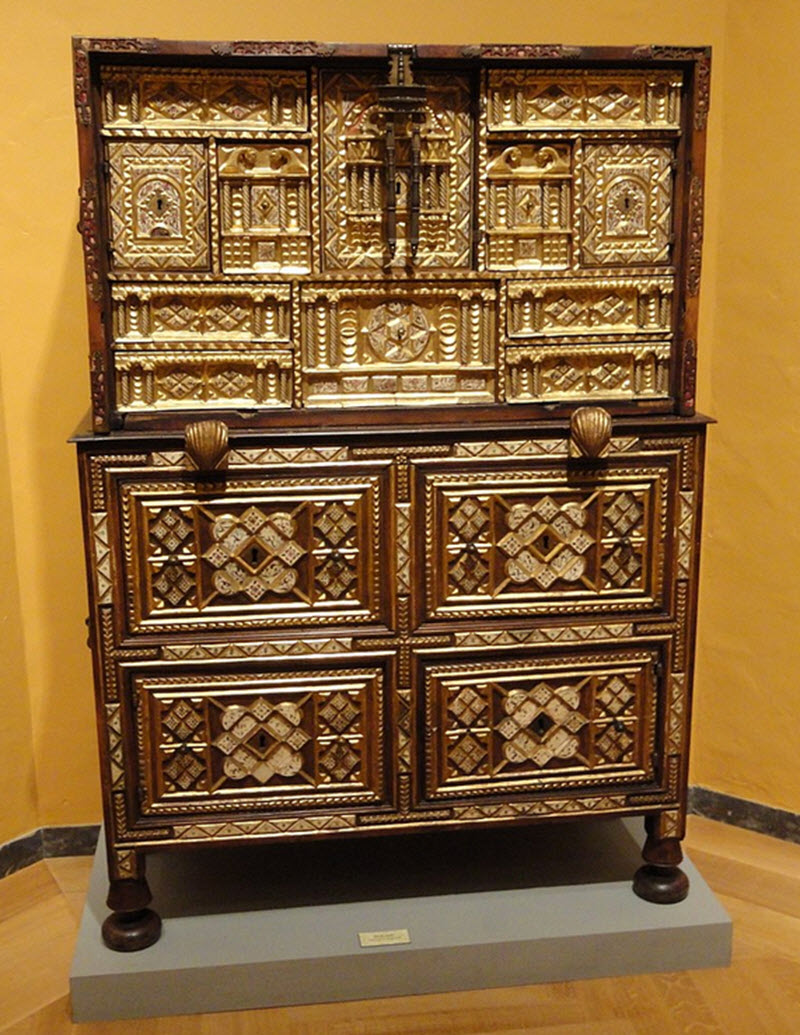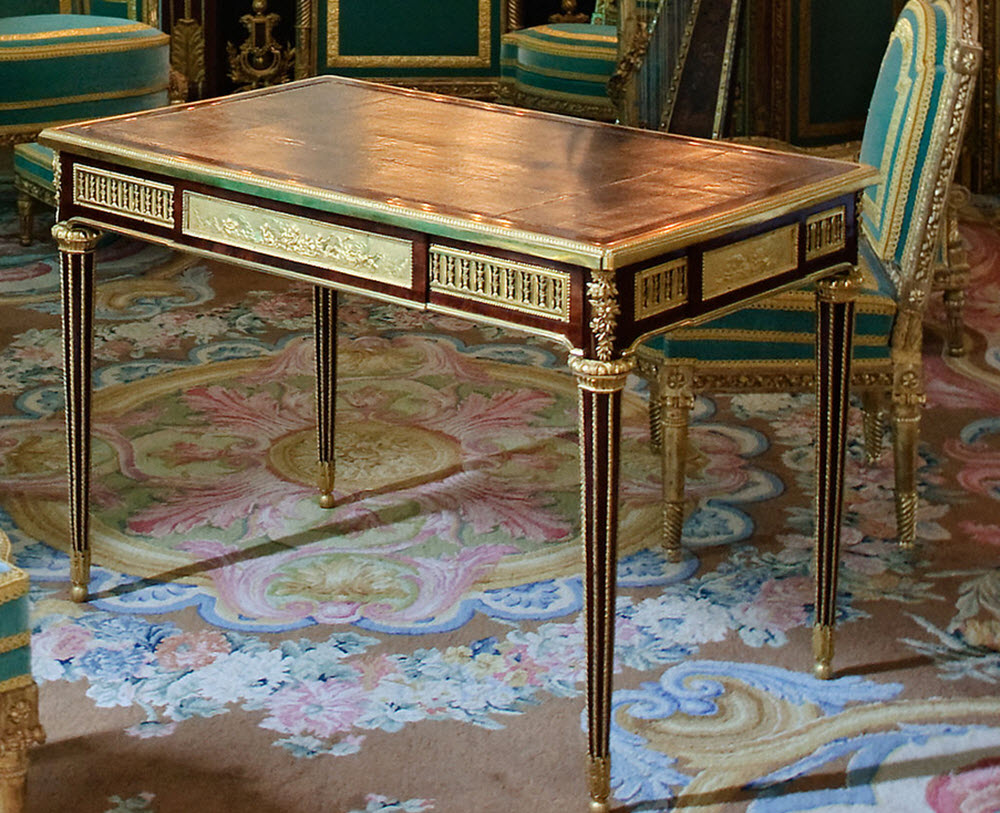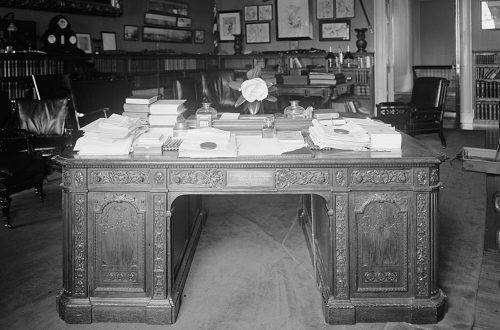Contents
Below, we will take a brief look at some writing desk models form the past.
Bureau plat
A bureau plat is a French-style type of writing table with a series of drawers located under the flat surface. The support is four legs.
An antique bureau plat will usually be designed with handwriting with an ink pen in mind. The surface of the table will therefore be covered in leather or a similar material that is better for ink writing than a simple hardwood surface. Also, one of the drawers is usually designed to keep the writing tools, i.e. with compartments for the inkwell, the blotter, the powder tray, etc. This style was especially popular in Britain from the mid-1700s and onward.
Spinet desk
At first glance, the spinet desk looks rather similar to the bureau plat. Upon closer inspection, you will notice that it is slightly taller and has a single drawer beneath instead of several. The single drawer runs almost the whole length of the flat top. If you investigate even more, you will find that there is actually no drawer below – what looks like the front of a drawer is actually a hinged panel. This panel is meant to be folded in, at the same time as half of the hinged top surface is folded back on the top of the other half. Inside, there will be a desktop surface with small drawers and pigeonholes. A spinet desk can be closed up without disturbing ongoing paperwork much.
Bureau à gradin
A bureau à gradin is similar to the bureau plat, but the drawers are not just located below, they are also built on top of parts of the flat surface (thus reducing the amount of free space). Some models have some of the space devoted to pigeonholes instead of drawers.
It is common for the drawers and pigeonholes to face the user, but there are models where they surround three sides of the desk.
Bargueño
Bargueño is a portable desk, usually consisting of two chests, and with sturdy metal handles on each side to make it easier to transport. Some models have a small support table (pie de puente) instead of the lower chest.

The bottom chest of a bargueño normally has drawers and is called the taquillón, while the top chest comes with a hinged desk surface which also serves as a side-mounted lid. With a bargueño, it is one of the side panels – not the top panel – that serves as the fold-out surface for writing, sewing, etc. The interior of a bargueño has small drawers, pigeonholes and similar for storage of small items.
The name Bargueño alludes to the town Bargas in Spain, and this type of desk became popular in Renaissance Spain among those who could afford it. The model remained sought after until the late 18th century. Then, it became popular again in the 20th century, and new bargueños are still built today in the 21st century. s
Since these desks were intended to be transported, they were usually fairly modest on the outside and more richly decorated on the inside. If you see a bargueño that is quite ornate on the outside, you can expect it to be even more impressive on the inside.




